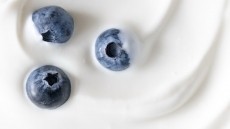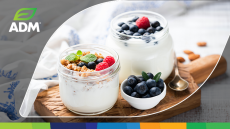Emulsions structure may affect sensory qualities of foods: Study

And the study, published in Food Research International, reports higher emulsion stability can be obtained with starch-based emulsions.
The food scientists investigated the influence of fat content and thickener type on the texture, structure, stability, aroma release profile, and sensory perception of a lemon flavoured oil/water emulsion.
Led by Sara Bayarri, from CSIC, the researchers found that “Despite their stabilising effect on oil/water emulsions, the addition of different hydrocolloids modify not only their rheological behaviour but also flavour release and sensory perception mechanisms in different ways.”
The authors said that better information on the effects different emulsifiers and stabilizers have on perceived flavour and texture of food emulsions is needed in order to optimise their design.
Emulsion performance
The food scientists noted that one of the biggest problems associated with the use of food emulsions is that they are thermodynamically unstable, and tend to break during certain processing operations (such as heat treatment, mechanical deformation, and freezing) or during storage.
They noted that hydrocolloids represent one of the most common strategies used to stabilise food emulsions, but added that changes to emulsion composition by varying fat and stabilizer, both in type and concentration, can lead to emulsions with different physical and sensory properties, which in turn may influence consumers’ acceptance.
“Fat has an effect on aroma release, modifying the qualitative, quantitative and temporal flavour profile of foods … Fat has also an influence on the emulsion texture, impacting on creaminess, smoothness or fattiness perception which may modify how flavour is perceived in emulsions during their oral processing,” said Bayarri and her team.
They report that previous studies have suggested an increase in viscosity through the addition of thickeners will result in decreased flavour and taste intensity.
The authors explained that their project aimed to further investigate this by assessing the influence of fat content and thickener type on rheological behaviour, structure, stability, in-vivo aroma release and sensory perception of flavoured oil/water emulsions.
Study details
Bayarri and her team prepared six formulations of a lemon flavoured oil/water emulsion, in which the oil content varied between 5% and 30% and the matrix composition was switched by altering between carboxymethyl cellulose and modified starch thickeners, or no thickener.
They found that both thickeners types were found to influence the aroma release profiles, while fat content had a variable effect on aroma perception, depending on the type of aroma compound used. Furthermore, they also noted significant differences in the creaming index based on oil content and thickener type.
Interactions between fat content and matrix type ware also reported to be significant on most flow and viscoelastic parameters, but not on flow index or loss modulus values. Bayarri and her colleagues concluded that both fat content and matrix type had a significant effect on the perceived flavour and texture attributes of the emulsions.
Source: Food Research International
Volume 44, Issue 6, Pages 1632-1641, doi: 10.1016/j.foodres.2011.04.049
“Flavour release and sensory characteristics of o/w emulsions. Influence of composition, microstructure and rheological behaviour”
Authors: C. Arancibia, L. Jublot, E. Costell, S. Bayarri











